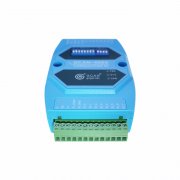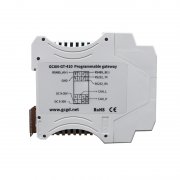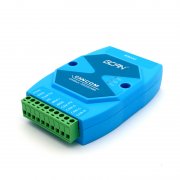CAN bus data can be relayed by optical fiber.
Now that we have talked about the CAN bus, let me briefly introduce it. It is an industrial field bus for industrial production control and communication. For example, when you are driving a car and you want to drive faster, you have to step on the accelerator. When you press the accelerator pedal, the corresponding fueling information will be transmitted to the engine through a certain channel. When the engine receives the fueling information, the gasoline is atomized and sprayed out, and the internal combustion of the engine performs work, driving the car to move forward quickly, and the entire acceleration process is completed. From this example we can see that the so-called industrial bus is the bridge between the commander and the actual worker. If the bridge is broken or broken, the actual work area is out of control. In that case, the results are unpredictable. Therefore, we must be cautious in the choice of industrial fieldbus. After many comparative studies, we found that the CAN bus is the one that best meets your needs. Its specific advantages are:
1. Fast data transmission speed, strong instantaneous communication and long data transmission distance. The CAN bus has a baud rate value of 1000Kbps in the range of 40 meters, and 5Kbps in the distance of 10 kilometers. The data transmission speed gradually decreases between 40 meters and 10 kilometers, but it does not show a cliff-like decline.
2. There are many nodes that can be connected. In theory, a CAN bus can connect 110 node devices at the same time. Although it may not reach this value in practical applications, it is also sufficient for use. It is very suitable for production lines with many nodes and complex processes or automotive applications.
3. The bus has strong anti-interference ability, it is not easy to be damaged, and the maintenance cost is low. The CAN bus uses two shielded twisted pairs with a voltage difference of 0.2V to transmit data. One line has a high voltage value and the other has a low voltage value. Because data can be transmitted as long as there is a voltage difference between them, even if there is external interference, it is unlikely to cause damage to the line. Can you make them have the same voltage value? Of course, nothing is absolute. When the external interference is too strong, the CAN bus should be bad, but the damaged node will automatically exit, and it will not continue to release error signals to affect other devices. In this case, the trouble of maintenance is eliminated, and the cost is naturally reduced.
In order to meet the needs of the majority of CAN bus users, Shenyang Guangcheng Technology Co., Ltd. has also introduced a variety of CAN fiber relay tools GCAN-208 series. Shenyang Guangcheng Technology GCAN-208 series CAN optical fiber relay tool integrates 1 (or 2) standard optical fiber interfaces (single-mode, multi-mode, SC, ST optional), 2 (or 1) standard CAN bus interfaces Industrial CAN bus to fiber converter.
In order to meet the needs of the majority of CAN bus users, Shenyang Guangcheng Technology Co., Ltd. has also introduced a variety of CAN fiber relay tools GCAN-208 series. Shenyang Guangcheng Technology GCAN-208 series CAN optical fiber relay tool integrates 1 (or 2) standard optical fiber interfaces (single-mode, multi-mode, SC, ST optional), 2 (or 1) standard CAN bus interfaces Industrial CAN bus to fiber converter.
Shenyang Guangcheng Technology GCAN-208 series CAN optical fiber relay tool can convert CAN bus data into optical signals for transmission through optical fiber. By using the GCAN-208 series modules in pairs, users can easily extend the CAN bus communication distance, effectively eliminate long-distance communication interference, and prevent the bus from being damaged by electromagnetic interference, ground loop interference, lightning strikes, and other equipment.






